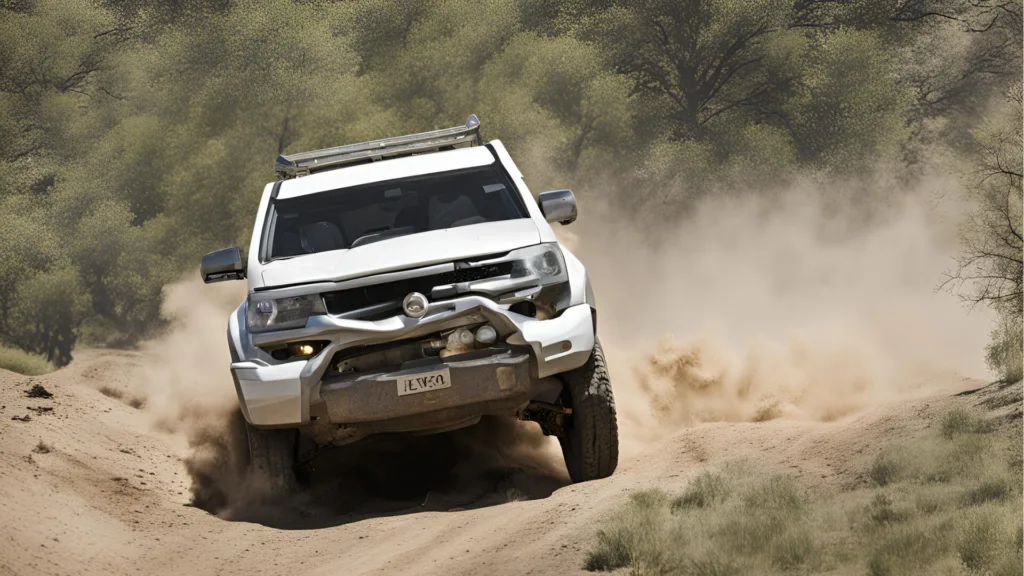Always prioritize Off-Road Driving Safety Tips by wearing seat belts and informing others of your off-road itinerary. Regularly check your vehicle’s condition before embarking on rough terrain adventures.
Off-road driving presents unique challenges and thrills that appeal to adventurous drivers. Navigating through rugged landscapes requires skill, preparation, and respect for the environment. As off-roaders, it’s essential to equip yourself with knowledge of the terrain and proper vehicle handling techniques.
Pre-travel preparation should include a thorough vehicle inspection, especially focusing on tires, brakes, and suspension components. Ensuring that your vehicle is capable of withstanding the demanding conditions off-road is critical for a safe journey. A well-rounded introduction to off-road driving safety encompasses understanding both the capabilities of your vehicle and the unpredictable elements of nature you may encounter. With these considerations in mind, drivers can confidently explore the great outdoors while minimizing potential risks.
Gear Up For The Trail
Gear up for the trail and embrace the ruggedness of off-road driving with confidence and safety in mind. Whether you’re conquering steep hills or navigating through muddy terrains, proper equipment is your best ally. Always check your gear before you hit the trail. Proper preparation can make the difference between a thrilling adventure and a cautionary tale. Buckle up as we dive into the essentials for both your ride and your personal protection.
Essential Off-road Equipment
The right tools and accessories not only enhance the off-road experience but also safeguard your vehicle against unpredictable conditions.
- Winch: A lifesaver for when you or a buddy gets stuck.
- All-Terrain Tires: Ensure better grip and durability.
- Lift Kit: Increases ground clearance, vital for tough trails.
- Skid Plates: Protect the undercarriage of your vehicle.
- Recovery Straps: For towing or being towed to safety.
- Jack and Spare Tire: Must-haves for tire-related emergencies.
- Navigation Tools: GPS or maps for reliable route planning.
- Off-Road Lights: Essential for visibility during night drives.
Personal Safety Gear
While your vehicle needs its armor, your personal safety gear is just as crucial. Never compromise on personal protection.
- Helmet: A must on challenging terrains to protect your head.
- Gloves: Secure your grip and protect your hands.
- Sturdy Boots: Support and traction for rough terrains.
- Goggles: Shield your eyes from dirt and debris.
- Hydration Pack: Stay hydrated on long trails.
- First-Aid Kit: For prompt response to injuries.
Suiting up with the right gear steps up your safety. It helps you focus on the adventure. Check these items off your list. Hit the track with peace of mind.

Pre-drive Preparation
Embarking on an off-road adventure thrills and tests limits. Proper prep ensures safety and fun. Learn critical steps for vehicle readiness and journey mapping. Stay informed on the latest weather conditions for a seamless experience.
Vehicle Checkup And Maintenance
Start each off-road trip with a thorough vehicle inspection. A well-maintained vehicle responds better in rough terrain. Follow this checklist:
- Engine oil – Keeps all moving parts lubricated
- Brake check – Essential for control
- Tire inspection – Proper tread depth and air pressure
- Suspension system – Handles bumps and dips
- Lights and signals – Must be fully operational
- Fluid levels – Coolant, brake fluid, and transmission fluid
Address any issues before departing. Keeping emergency kits and tools on board is wise. Pack spares like tires, belts, and hoses too.
Route Planning And Weather Updates
Knowing your route is paramount. Research terrain types you’ll encounter. Bring updated maps or GPS devices with you. Always check weather forecasts. This prevents getting stuck in dangerous conditions.
| Preparation Step | Details |
|---|---|
| Local Trail Conditions | Check online or with local authorities |
| Sunrise/Sunset Times | Plan drives during daylight for visibility |
| Weather Alerts | Adjust plans according to latest updates |
Inform someone about your route and expected return time. Stay flexible – be ready to change plans if weather shifts. Your safety comes first.
Mastering Off-road Driving Techniques
Mastering off-road driving techniques empowers adventure seekers to tackle uncharted paths with confidence. Whether you’re cruising through sandy dunes or navigating rocky trails, knowing the right maneuvers can transform your experience from daunting to thrilling.
Navigating Various Terrains
Conquering different landscapes requires skill and precision. Here are essential tips:
- Assess the terrain: Before advancing, observe the ground to plan your route.
- Maintain momentum: Keep steady speed to avoid getting stuck, especially in sand or mud.
- Use low gears: In rocky areas, low gears provide the torque needed for climbing.
- Avoid sudden turns: Sharp maneuvers can lead to skids or rollovers on loose surfaces.
Understanding Your Vehicle’s Capabilities
Know your vehicle’s strengths to ensure safe and effective off-roading.
| Feature | Function | Importance |
|---|---|---|
| Ground clearance | Height between the ground and vehicle’s underside | Prevents undercarriage damage |
| 4WD system | Drives all four wheels for better traction | Essential for slippery or uneven surfaces |
| Tire tread | Depth and pattern of tire grooves | Crucial for grip on various terrains |
| Approach angle | Maximum ramp angle without scraping | Allows safe ascent on steep inclines |
Safety Protocols Off The Beaten Path
Off-road adventures promise thrills, but safety is key. Every trailblazer needs a solid plan for tackling the unexpected. This section breaks down crucial protocols to keep you safe when the road ends, and the wilderness begins.
Maintaining Communication
Staying connected is vital for off-road safety. These tips ensure help is always a call away:
- Carry a satellite phone when cellular service fades.
- Program emergency numbers before heading out.
- Use a GPS tracker so others can pinpoint your location.
Emergency Procedures
In a pinch, these protocols can be life-saving:
- Never panic. Stay calm to think clearly.
- Keep an emergency kit in your vehicle. Include medical supplies, food, water, and tools.
- If stranded, stay with your vehicle for visibility.
- Learn basic first-aid and repair skills before your journey.
Environmental Considerations
When we take our adventures off the beaten path, it’s crucial to remember our duty to the environment. Driving responsibly off-road means considering the lasting impact we leave behind. This section will guide you through essential tips to reduce our footprint while enjoying the freedom of off-road driving.
Minimizing Ecological Impact
As off-road enthusiasts, the responsibility to protect natural habitats falls on our shoulders. Small choices can create big changes. Here are straightforward ways to make those changes.
- Carry out what you carry in – leave no waste behind.
- Use biodegradable products to lessen chemical dispersion.
- Keep noise levels down, as they can distress wildlife.
- Avoid spilling fluids; bring a kit to manage leaks.
Staying On Designated Trails
Resisting the urge to blaze new trails is key for preserving ecosystems. Here’s why staying on existing paths is better for our Earth.
- They protect plant life that can be killed by tires.
- Soil compression by off-trail driving can lead to erosion.
- It helps prevent disturbing wildlife and their homes.
Select vehicles and equipment that match the trail’s difficulty level. Always abide by local rules and respect closed trail signs.

Post-adventure Vehicle Care
The thrills of an off-road adventure can take a toll on your vehicle. Proper post-adventure care is crucial for keeping your vehicle in top condition. Prevent costly repairs and ensure your safety on the next journey with these vehicle upkeep tips.
Cleaning And Inspection
Cleaning your vehicle after an off-road trip is vital. Mud and debris can hide issues that need attention. Follow these steps for a thorough clean:
- Start with a rinse to remove large pieces of dirt.
- Use a gentle soap and a soft brush to clean the body.
- Pay special attention to the undercarriage.
- Check for any damage during the cleaning process.
Inspect these parts closely:
| Part | What to Look For |
|---|---|
| Tires | Cuts, punctures, and wear |
| Brakes | Unusual noises or wear |
| Suspension | Damage or leaks |
| Lights | Function and cracks |
Regular Maintenance After Rough Rides
Rough rides demand regular maintenance. Ensure your vehicle’s longevity with these tips:
- Change the oil and filter more often.
- Inspect brake pads and rotors for wear.
- Check suspension components for damage.
- Test battery health and connections.
Stay ahead of potential issues. A reliable vehicle means a safer adventure next time.
Frequently Asked Questions On Off-road Driving Safety Tips
What Are Essential Off-Road Driving Safety Tips?
Off-road driving demands preparation and caution. Key tips include understanding your vehicle’s capabilities, using appropriate tires, and engaging the correct 4WD mode. Always plan your route, stay updated on weather conditions, and pack emergency supplies. Never venture alone and respect the local environment and regulations.
How Do I Prepare My Vehicle For Off-roading?
Before heading off-road, ensure your vehicle is in top condition. Check fluid levels, brakes, tires, and suspension. Equip it with off-road tires, additional fuel, a spare tire, and a reliable recovery kit. Familiarize yourself with the 4WD system and its settings.
Safety should be your priority.
What Safety Gear Is Needed For Off-road Driving?
It’s crucial to carry safety gear when off-roading. This includes a first aid kit, fire extinguisher, tow straps, shovel, and a GPS or map for navigation. Always have a working communication device, like a satellite phone or a two-way radio, in the event of an emergency.
Can You Off-road In Wet Conditions?
Off-roading in wet conditions is possible but requires extra care. Lower your speed and avoid heavy braking to maintain control. Be mindful of slippery surfaces and sudden streams or flooding. Assess terrain stability to prevent getting stuck or causing environmental damage.
Hydroplaning is a risk, so drive attentively.
Conclusion
Embarking on an off-road adventure demands respect for the trail and a commitment to safety. By following the guidelines shared, drivers can navigate treacherous paths with confidence. Remember, preparation and awareness are your best tools for enjoying the off-road experience while preserving both the environment and your well-being.
Safe travels!


